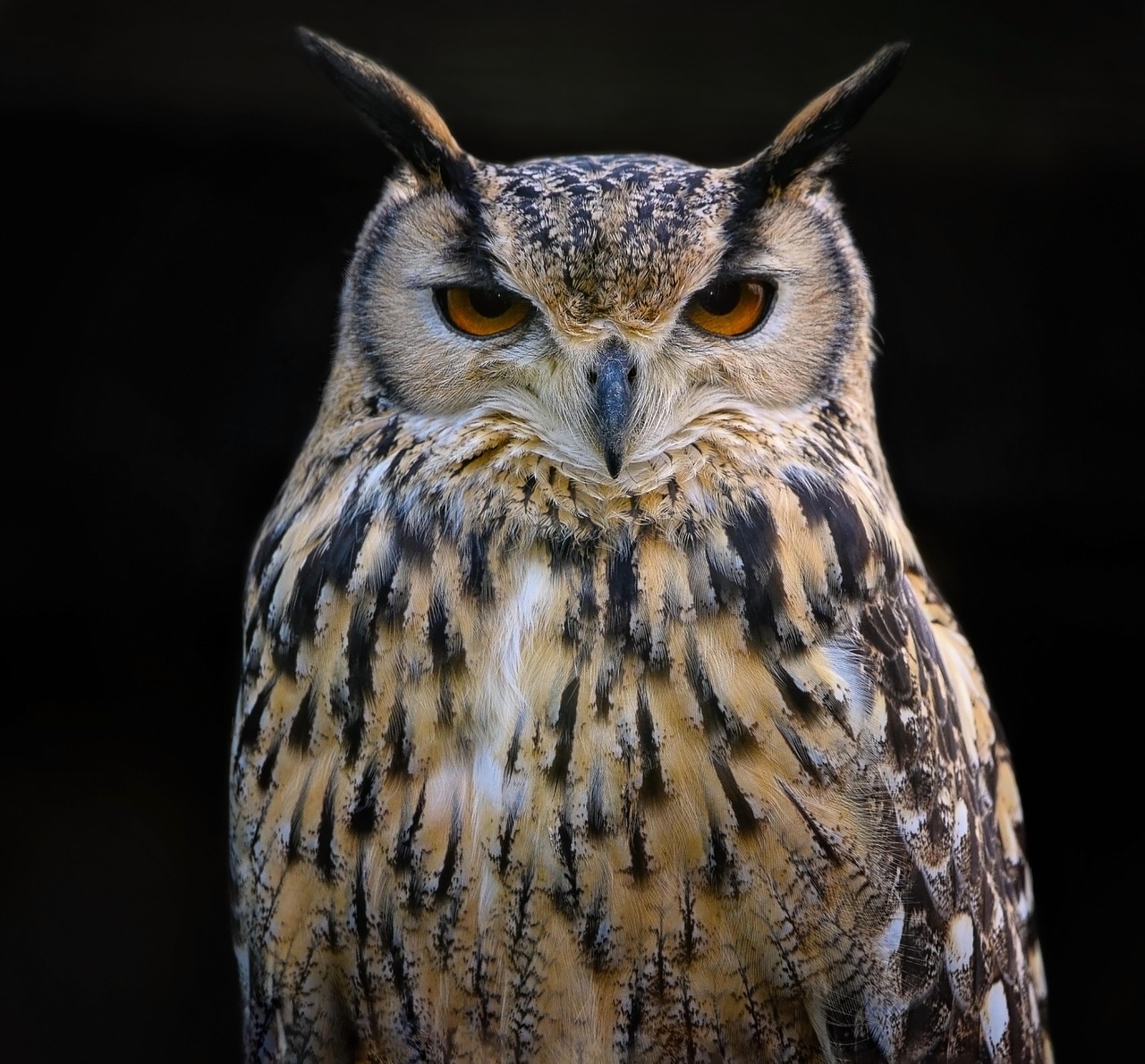The Eurasian Eagle-Owl, a magnificent avian predator, commands attention with its imposing size and piercing gaze. Often misconstrued as a mere owl, its nomenclature prompts a compelling question: Why is it named after an eagle? This article delves into the etymology and biological characteristics of Bubo bubo, unmasking the reasons behind this seemingly incongruous appellation.
Delving into the Taxonomy: More Than Just an Owl
The classification of organisms often reveals subtle nuances. While undoubtedly an owl belonging to the Strigiformes order, the Eurasian Eagle-Owl exhibits characteristics that blur the lines between typical owls and certain raptors, specifically eagles. The key lies in understanding its size, hunting behavior, and evolutionary lineage.
Consider its physical dimensions. The Eurasian Eagle-Owl is one of the largest owl species globally, rivaling some eagles in wingspan and weight. An adult can reach a wingspan exceeding six feet, a feature far surpassing that of many other owl species. This considerable size allows it to tackle larger prey, mirroring the hunting strategies of eagles.
Size Matters: A Comparative Analysis
To fully appreciate the “eagle” component in its name, a comparative analysis with other owl species is crucial. A barn owl, for instance, is significantly smaller, relying on rodents and insects for sustenance. Conversely, the Eurasian Eagle-Owl’s size permits it to hunt rabbits, hares, foxes, and even young deer. This predatory versatility contributes to its “eagle-like” persona.
Predatory Prowess: Hunting Like an Eagle
The Eurasian Eagle-Owl’s hunting behavior further solidifies its connection to eagles. While many owls employ stealth and silent flight to ambush unsuspecting prey, the Eurasian Eagle-Owl also utilizes its powerful talons to seize and dispatch larger animals. Its grip strength is substantial, allowing it to subdue prey that would be impossible for smaller owls. The act of grasping prey with such force is reminiscent of the raptorial behavior of eagles.
A Diet Reflecting Apex Predator Status
An eagle’s diet typically includes sizable mammals and birds. Likewise, the Eurasian Eagle-Owl exhibits a dietary breadth that belies its classification as merely an owl. The prevalence of larger mammals in its diet, mirroring that of eagles, supports the “eagle” association. Analyzing the owl’s castings, or regurgitated pellets, offers insights into its dietary habits. These pellets often contain bones and fur, providing evidence of the owl’s consumption of diverse and substantial prey.
Evolutionary Considerations: A Shared Ancestry?
While not directly sharing a recent common ancestor with eagles, both owls and eagles belong to the larger clade of birds of prey. The Eurasian Eagle-Owl may have evolved certain “eagle-like” characteristics through convergent evolution, where unrelated species develop similar traits due to similar ecological pressures. A deep dive into their phylogenetic relationships is complex, but the superficial similarities are undeniable.
Folklore and Cultural Significance: An Apex Predator’s Image
Across different cultures, the Eurasian Eagle-Owl holds a prominent position, often associated with power and wisdom. Its imposing size and nocturnal habits have contributed to its mystique. In some cultures, it is seen as a symbol of both good and evil, reflecting the duality of its predatory nature.
The “eagle” component of its name might also stem from folklore associating it with the majesty and power typically attributed to eagles. The sheer size and commanding presence of the Eurasian Eagle-Owl undoubtedly contribute to this perception.
Visual Acuity: A Hunter’s Edge
Both eagles and the Eurasian Eagle-Owl possess exceptional eyesight, essential for detecting prey from considerable distances. The owl’s large, forward-facing eyes provide excellent binocular vision, crucial for judging distances accurately in low-light conditions. This visual prowess further cements its status as an apex predator, similar to eagles.
Feathered Auricles: An Auditory Advantage
Eurasian Eagle-Owls are known for their prominent feather tufts, or “ear” tufts, which are not actually ears. These auricles, coupled with their facial disc, aid in sound localization, giving them remarkable auditory acuity. This is yet another tool that allows for effective hunting, even when prey is hidden.
Conservation Status: A Species Under Pressure
Despite their impressive capabilities, Eurasian Eagle-Owl populations face threats from habitat loss, persecution, and electrocution. Conservation efforts are crucial to ensure the survival of this magnificent species. These efforts include habitat protection, promoting coexistence with humans, and mitigating the risks posed by power lines.
Conclusion: More Than Meets the Eye
The Eurasian Eagle-Owl’s name is not merely a taxonomic quirk. It reflects the owl’s unique combination of size, hunting behavior, diet, and cultural significance. While classified as an owl, it embodies several characteristics typically associated with eagles, earning it the “eagle” moniker. By understanding the biological and ecological factors that contribute to its identity, we gain a deeper appreciation for this magnificent avian predator and the intricacies of the natural world.
